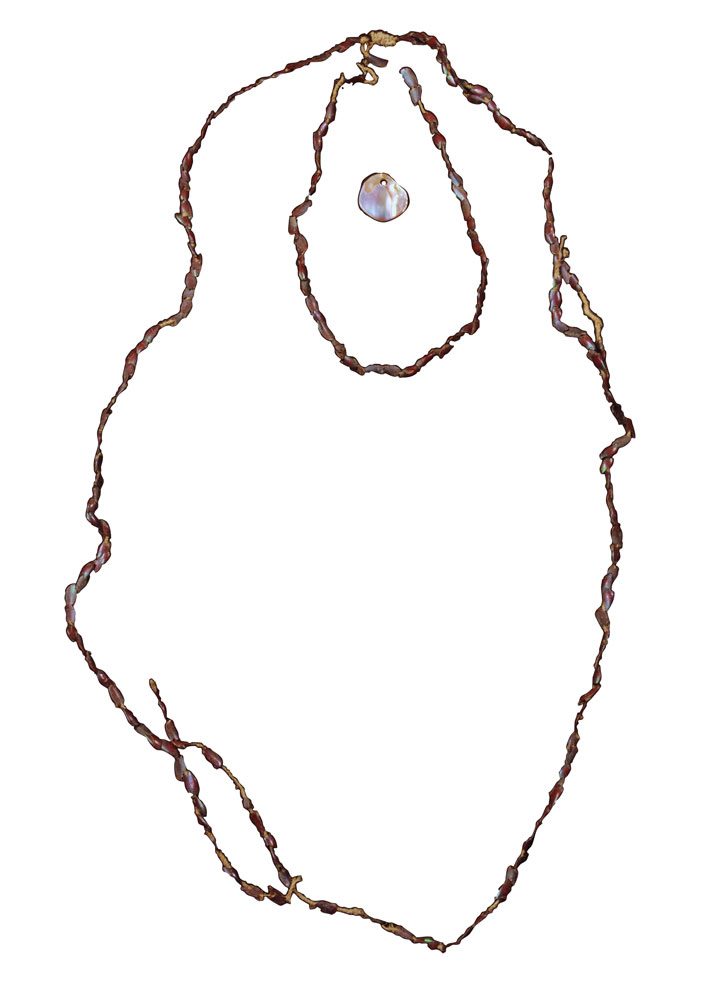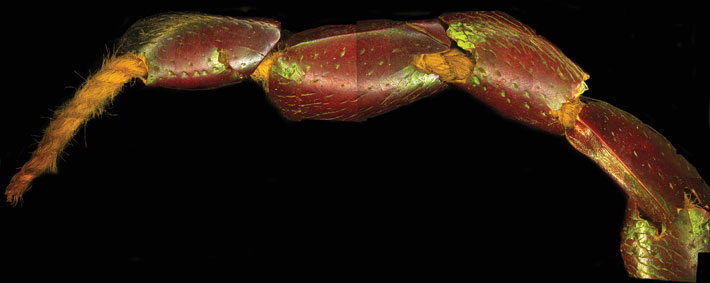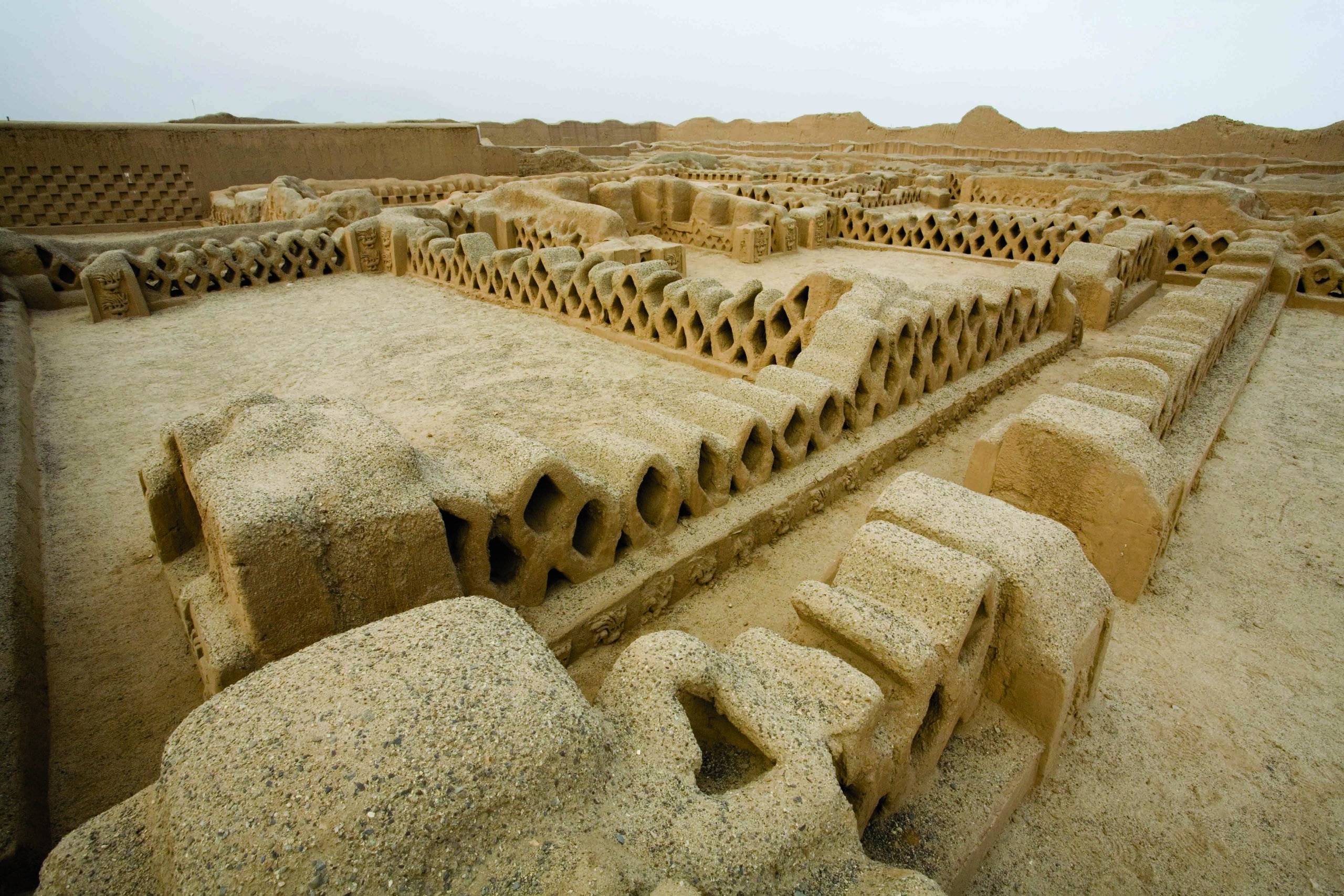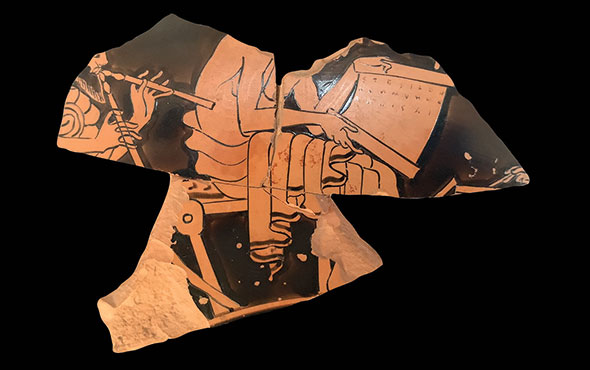
Different people value different things. The same goes for cultures at large. The things people value and how they choose to display their wealth depends on a great number of factors: geography, history, personal preference, religious beliefs, and mythology, to name just a few. And while the term “wealth” may evoke images of shining gold and silver, glittering gems, and piles of currency, something that may not have any value to people of one culture may be precious to another. It is often at times of momentous change that notions of value can provide the greatest insight into a culture’s belief system. Recently, archaeologist Michael Terlep, who works in Arizona’s Kaibab National Forest, and colleagues from Northern Arizona University (NAU) have explored how members of the Basketmaker II culture in the American Southwest displayed their wealth and power as they were undergoing the dramatic shift from hunting and gathering to farming. They fashioned an unusual form of jewelry: necklaces made from insect exoskeletons.
The Basketmaker II people lived across the Colorado Plateau, which covers parts of Colorado, Utah, Arizona, and New Mexico, between 500 B.C. and A.D. 500. These seminomadic people farmed maize and gourds during the summer and hunted wild game during the winter. They are perhaps best known for their skill in producing ornate woven items such as mats, aprons, sandals, bags—and the painted baskets that give them their name. These objects do not appear to have been owned only by particularly powerful individuals or families, but rather were evenly spread throughout the community. While such a pattern of distributing wealth is typical of hunter-gatherers, it is unusual in a society that has adopted farming.

Across the world, as predominantly egalitarian hunter-gatherer groups began to adopt faming and embrace more sedentary lifestyles, archaeologists often see evidence of increased social hierarchy—which is to say that society was gradually divided into people at the top, in the middle, and at the bottom, with the people at the top having more power and wealth than everyone else. At sites such as Cahokia in Illinois, for example, the Mississippian culture (ca. A.D. 900–1700) had a ranked society in which chiefs and an elite class oversaw workers and lower-class families.
Scholars hotly debate the exact processes by which people in different cultures developed status and power, but a widely accepted theory sees the accumulation of surplus goods as a possible driver. As certain individuals acquired more goods than others and became powerful in a community, they were able to distinguish themselves further by accumulating even more personal property such as opulent homes, art, and jewelry. While archaeologists have occasionally found artifacts such as stone pendants and beads in Basketmaker II houses, pointing to the production of some prestige items, they are exceptionally rare. This has led some to suggest that Basketmaker II people adopted agriculture without experiencing the expected increase in social hierarchy. “Archaeologists wondered for a long time if these people somehow managed to work around issues of wealth and status as they transitioned into agriculture,” says Terlep. As it turns out, the evidence that this was not the case was there all along, just not in the form researchers were expecting. There were no precious stones such as turquoise, commonly used later in the culture’s history, to signify status distinctions among the Basketmaker II people. Instead, they occasionally displayed their higher positions by fashioning necklaces from the iridescent legs of the green June beetle.

Terlep has focused his research on two examples of beetle adornments he found in a storage repository at Edge of the Cedars State Park in Utah. One, a fragment of fiber with 16 insect legs, was discovered by NAU archaeologists at a level in Boomerang Shelter in southern Utah’s Bears Ears National Monument that dates to the Basketmaker II period. Although only a portion of the artifact was recovered during excavation, its shape and materials indicate that it was likely part of a necklace or bracelet. The second is a complete necklace fashioned of more than 200 beetle legs that likely came from Atlatl Cave, just 20 miles from Boomerang Shelter, which Terlep radiocarbon dated to the Basketmaker II period.

Each of these beetle necklaces would have required more than 100 insects and taken considerable time and effort to produce. An artisan would have had to painstakingly remove insect femurs just a fifth of an inch long and puncture holes in them so they could be strung onto an extremely fine cord, likely made of yucca, measuring just a twenty-fifth of an inch thick. Because green June beetles have not historically been found in the region surrounding Atlatl Cave and Boomerang Shelter, it’s possible that the Basketmaker II people would have needed to travel or trade to acquire them. “These adornments were very costly to produce and likely signaled that the wearer was a person of status,” says Terlep. “Because insects in southwestern Native American cultures hold significance within creation mythology and storytelling, it’s probable that these necklaces had symbolic meaning, too.”
Terlep hopes that his research will encourage archaeologists to look for unconventional or unexpected evidence of social organization when investigating new Basketmaker II sites. As he continues his studies, Terlep plans to work alongside Native American collaborators in the area to build a stronger base of information that will draw upon traditional knowledge to help recognize and understand objects such as the beetle adornments. “Our ideas about wealth may have led us to overlook some items like insects in Basketmaker sites,” Terlep says. “Coordinating with local tribes will help reveal information and stories that were clouded by a Western bias.”












